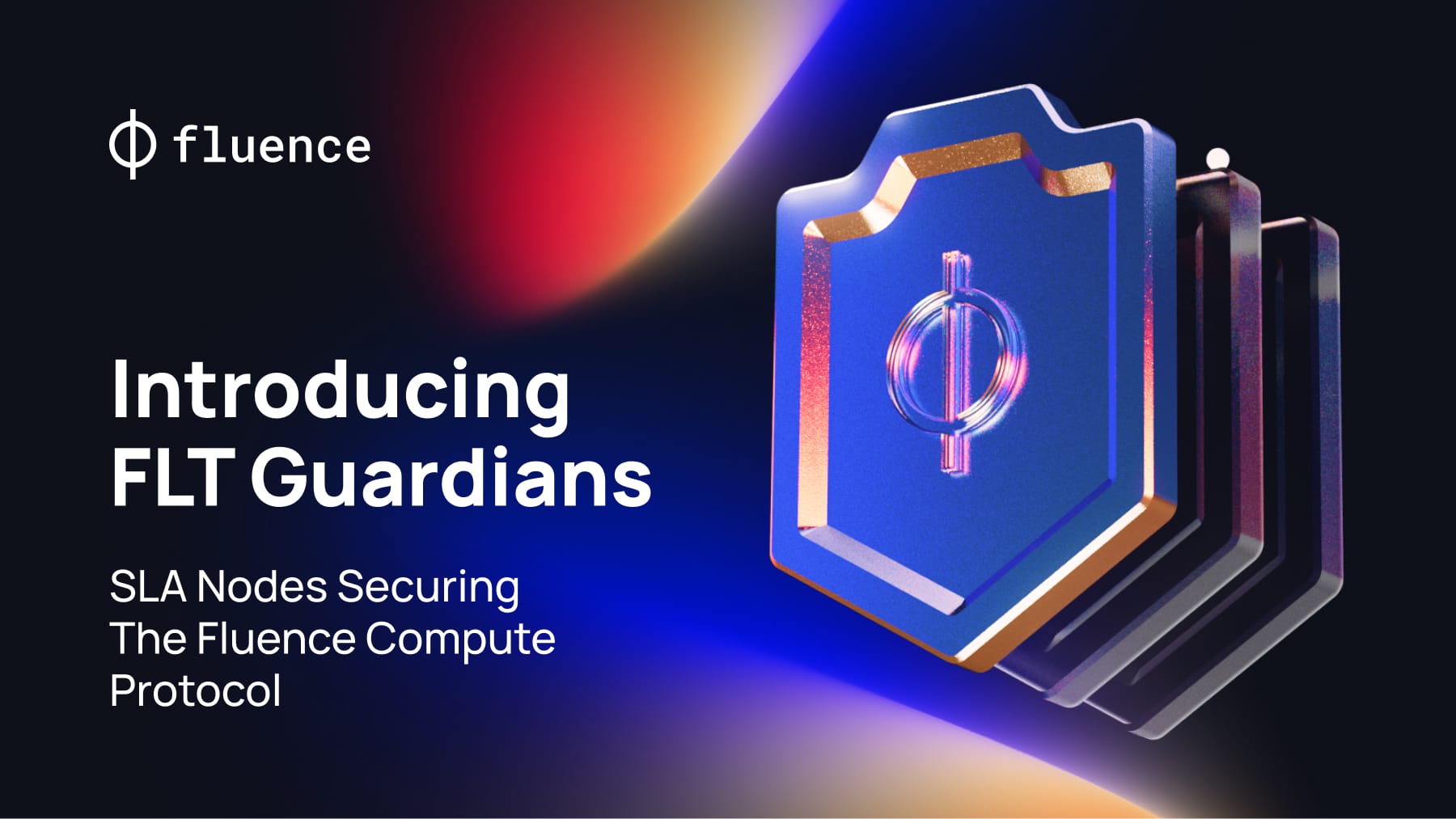Introducing FLT Guardians: Community Monitoring for Cloudless Infrastructure

Cloud computing powers everything from smart contracts to machine learning, yet centralized systems pose issues like hidden reliability, monopolistic dominance, and trust-dependent failures.
Fluence presents a robust solution with its Guardian network—a decentralized community of SLA monitors ensuring compute providers' accountability. This new structure lays important groundwork for transparency and resilience in web3 compute networks.
Earn your spot in the first cohort by participating in the Pointless Program.
What are Guardians and its Reward Structure
Guardians act as autonomous overseers within the Fluence network, working in real-time. They ensure the protocol's proper functioning by leveraging telemetry and on-chain data for insights and alerts. This decentralized validation model replaces centralized trust with distributed resilience, supported by a global community.
The Guardians Initiative will protect the network through community involvement. By operating lightweight nodes on personal devices to monitor and secure the network, participants earn passive income via FLT incentives and access discounted computing resources. FLT is closely linked to platform compute usage, effectively tokenizing compute consumption for FLT holders, making it one of the few RWA compute assets.
Tokenizing Trust: $FLT as the Economic Backbone
The Guardian system is built on incentives, and FLT is the currency that drives participation.
FLT reflects network usage by linking access and performance directly to compute consumption. Guardians receive FLT for operation and accurate reporting, while users spend it to access compute capacity at favorable rates. Every unit of compute becomes an on-chain asset grounded in verified delivery.
Through enforced transparency, FLT becomes more than a transactional token. It anchors accountability across the entire system.
How the Guardian Model Works
Fluence Compute Providers commit to SLAs based on performance targets like uptime and latency. Guardians track these benchmarks independently, replacing reliance on internal metrics or user complaints with verified external observation.
Guardians take on three core responsibilities:
- Real-Time MonitoringThey track provider availability and latency on an ongoing basis. The system requires minimal bandwidth and can run on common consumer or edge devices.
- Transparent Data ReportingAll monitoring data is made public, either on-chain or through accessible APIs. Customers can inspect performance data directly when deciding where to deploy workloads.
- Automated Penalties for SLA BreachesProviders who fall short of their SLA commitments (e.g., uptime drops below 99.9%) see their staked tokens slashed. The redistributed tokens reward both users impacted by degraded performance and Guardians who detect it.
This monitoring structure creates natural accountability:
- Providers aim for consistently strong performance to protect their stakes.
- Guardians benefit when they report accurately.
- Users don’t need to conduct their own checks to ensure reliability.
This decentralized mechanism removes the need for centralized enforcement while incentivizing honesty across all participants.
How to Become a Guardian
Running a Guardian node is accessible. All you need is a stable internet connection and a mobile device, not enterprise infrastructure.
There are two ways to receive a Guardian license:
- Hold FLTHolding a specified amount of FLT tokens qualifies you for a Guardian license. This path is ideal for existing supporters of the network.
- Earn Points via the Pointless ProgramYou can become eligible by earning and stacking points through the Pointless Program.
This approach ensures low barriers to entry while keeping the monitoring layer broad and decentralized. It encourages organic growth and invites a wider group of contributors into Fluence’s cloudless infrastructure.
Why Fluence Guardians Matter Now
Centralized compute infrastructure has already proven to be fragile. Cases of lock-in, unplanned service cuts, and outages highlight the risk of trusting opaque systems. As AI and smart contracts continue to depend on scalable infrastructure, transparency will become essential.
Fluence’s Guardians bring auditability to compute. They provide a layer of distributed verification that removes reliance on performance claims alone. Independent monitors supply the data, and the protocol handles enforcement.
It’s a structure where contributors, users, and token holders share the same goals: reliable access, clear metrics, and truth-based reporting. The model echoes proven systems like Bitcoin’s miners and Ethereum’s validators but applies those principles directly to monitoring service quality.
Be Part of the Monitoring Layer That Makes Web3 Compute Trustless
Whether you're into DePIN, developing on web3, or just curious about how tokenized compute works, there's a way to participate.
Guardian onboarding is open. Earn eligibility through the Pointless Program or secure your license by holding FLT tokens. Both paths support a cloudless layer guided by transparent incentives and community oversight.
Earn your spot in the first cohort by participating in the Pointless Program.

